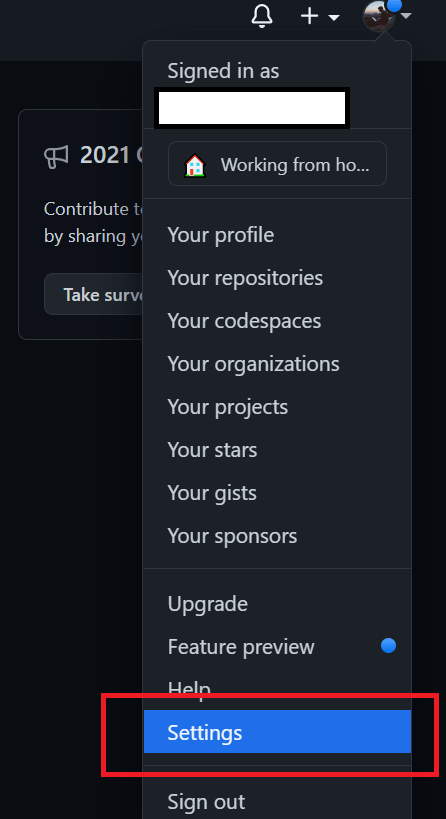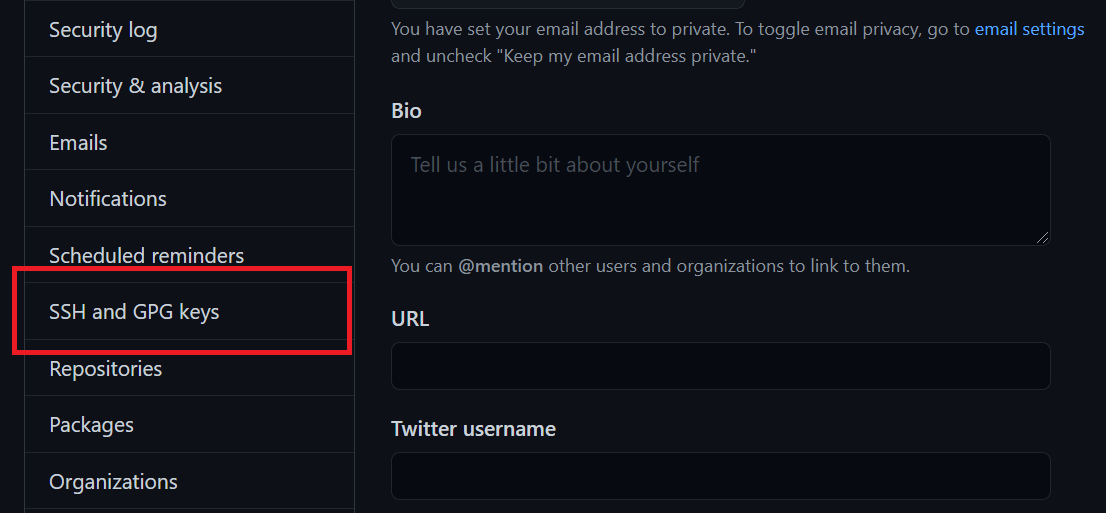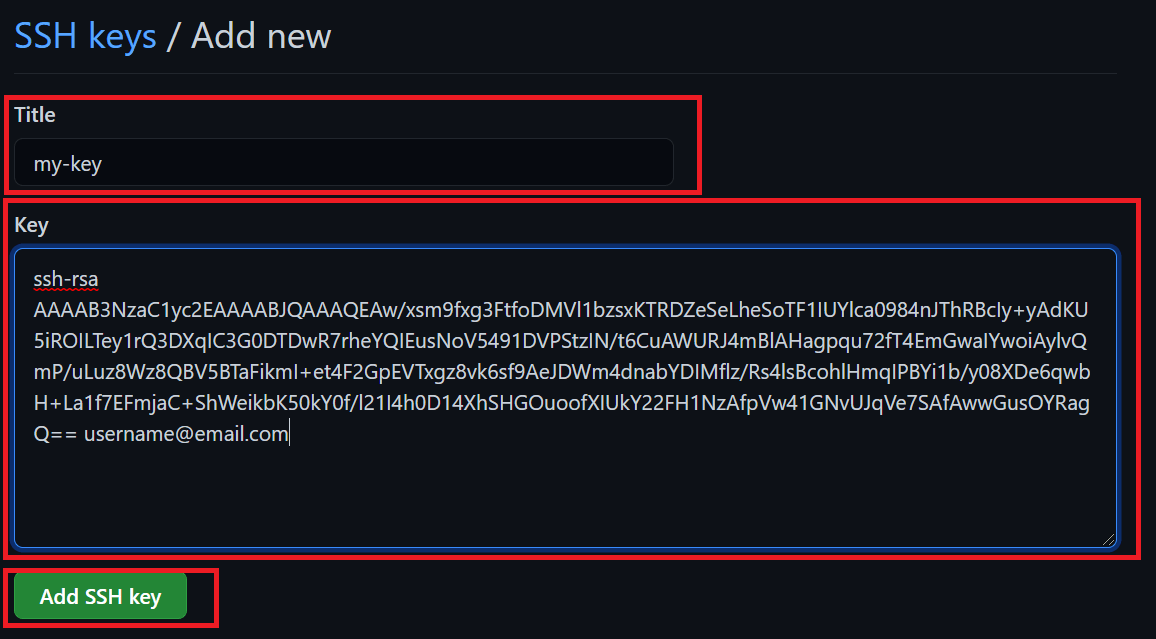Objectives
- Explain what an SSH key is
- Generate your own SSH key pair
- Add your SSH key to your GitHub account
What is an SSH Key?
An SSH key is an access credential in the SSH protocol. Its function is similar to that of user names and passwords, but the keys are primarily used for automated processes and for implementing single sign-on by system administrators and power users.
When working with a GitHub repository, you’ll often need to identify yourself to GitHub using your username and password. An SSH key is an alternate way to identify yourself that doesn’t require you to enter you username and password every time.
SSH keys come in pairs, a public key that gets shared with services like GitHub, and a private key that is stored only on your computer. If the keys match, you’re granted access.
The cryptography behind SSH keys ensures that no one can reverse engineer your private key from the public one.
Generate an SSH key pair
The first step in using SSH authorization with GitHub is to generate your own key pair.
You might already have an SSH key pair on your machine. You can check to see if one exists by moving to your .ssh directory and listing the contents.
$ cd ~/.ssh
$ lsIf you see id_rsa.pub, you already have a key pair and don’t need to create a new one.
If you don’t see id_rsa.pub, use the following command to generate a new key pair. Make sure to replace [email protected] with your own email address.
$ ssh-keygen -t rsa -C "[email protected]"When asked where to save the new key, hit enter to accept the default location.
Generating public/private rsa key pair.
Enter file in which to save the key (/Users/username/.ssh/id_rsa):You will then be asked to provide an optional passphrase. This can be used to make your key even more secure, but for this lesson you can skip it by hitting enter twice.
Enter passphrase (empty for no passphrase):
Enter same passphrase again:When the key generation is complete, you should see the following confirmation:
Your identification has been saved in /Users/username/.ssh/id_rsa.
Your public key has been saved in /Users/username/.ssh/id_rsa.pub.
The key fingerprint is:
01:0f:f4:3b:ca:85:d6:17:a1:7d:f0:68:9d:f0:a2:db [email protected]
The key's randomart image is:
+--[ RSA 2048]----+
| |
| |
| . E + |
| . o = . |
| . S = o |
| o.O . o |
| o .+ . |
| . o+.. |
| .+=o |
+-----------------+The random art image is an alternate way to match keys but we won’t be needing this.
Add the public key to your GitHub account
We now need to tell GitHub about your public key. Display the contents of your new public key file with cat:
$ cat ~/.ssh/id_rsa.pub
The output should look something like this:
ssh-rsa AAAAB3NzaC1yc2EAAAABIwAAAQEA879BJGYlPTLIuc9/R5MYiN4yc/YiCLcdBpSdzgK9Dt0Bkfe3rSz5cPm4wmehdE7GkVFXrBJ2YHqPLuM1yx1AUxIebpwlIl9f/aUHOts9eVnVh4NztPy0iSU/Sv0b2ODQQvcy2vYcujlorscl8JjAgfWsO3W4iGEe6QwBpVomcME8IU35v5VbylM9ORQa6wvZMVrPECBvwItTY8cPWH3MGZiK/74eHbSLKA4PY3gM4GHI450Nie16yggEg2aTQfWA1rry9JYWEoHS9pJ1dnLqZU3k/8OWgqJrilwSoC5rGjgp93iu0H8T6+mEHGRQe84Nk1y5lESSWIbn6P636Bl3uQ== [email protected]Copy the contents of the output to your clipboard.
Login to https://github.com and bring up your account settings by clicking the profile icon and settings.

Select SSH and GPG Keys from the side menu, then click the New SSH key button in the SSH Keys section.


Name your key something whatever you like, and paste the contents of your clipboard into the Key text box.

Finally, hit Add SSH key to save. Enter your GitHub password if prompted.
For complete Git tutorials and HowTos, please visit this link
